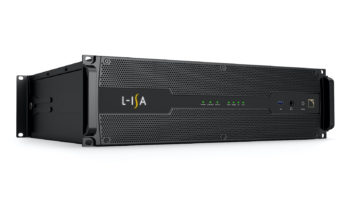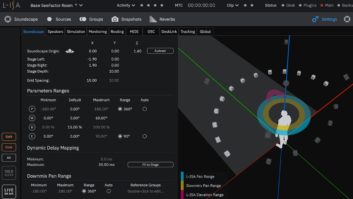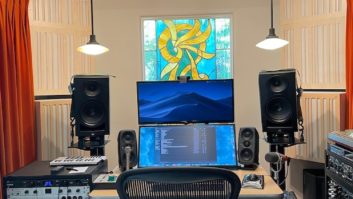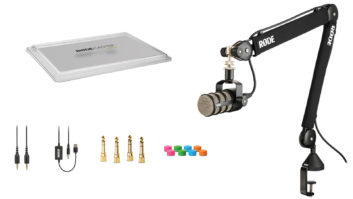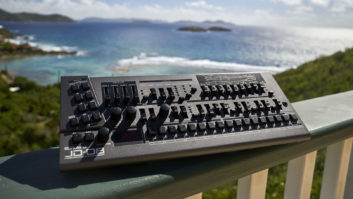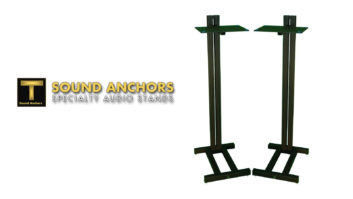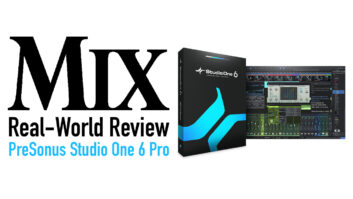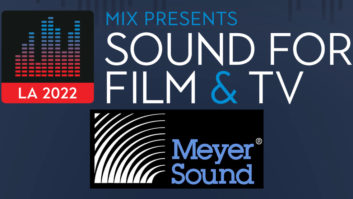Multiple diaphragm surround-sound mics seem like such a luxury to engineers who work in stereo. There are numerous solutions and methodologies for capturing such immersive audio, but the microphone systems on the market are quite expensive and often bulky—and if not bulky, they at least have accompanying hardware for encoding, monitoring, etc. Worse yet, some solutions require users to commit to a surround format and hope that any needed fold-downs or re-formatting will be successful in post. The SoundField SPS200 takes an entirely different approach.
Features
The mic itself is pretty simple and shockingly portable: four small-diaphragm condensers (the same as in other SoundField mic systems) in one chassis, in a tetrahedral arrangement, mounted on a single small body (no bigger than a C451 with multiple heads). Its proprietary cable fans out to four XLR outputs. The mic can be positioned endfire or side-address; then (remember how you pointed it) the accompanying Surround Zone software (TDM/RTAS, AU, VST) will encode your audio into the desired format (stereo, 5.1, 6.1, 7.1, etc.) after the fact, in post. More than just encoding, numerous “placement” functions are selectable: variable HPF, M/S encoding, swiveled left or right, tilted up or down, zoomed in or out, and widths of front and back are adjustable; as long as the mic is reasonably placed, numerous options abound.
 In Use
In Use
I used the mic for some non-surround apps, like capturing an a capella Gospel trio. I placed the 200 in the center of the group, aimed upward (side-address), used four channels of super-well-matched Earthworks 1024 mic amps and received great results. The frequency balance was desirably neutral—similar to a DPA or Schoeps mic array, not euphonic like Neumann or AKG. The cardioid patterns seemed sufficiently wide, with very nice imaging and a palpable sense of “being there.” Without using the software, I panned and leveled using only common sense and received great results. OK, I did add a little chesty bottom end in the mix, and that really pleased the clients.
Next, it was time to really test this baby, so I called in local engineer Joe Miller for a second opinion. Joe used it to record orchestra with choir and he praised the ease of set-up. Monitoring only in stereo on location, Miller wondered how his tracks might sound after decoding, but found the software to be indispensable. “The microphone sounded great, but the software took it to the next level,” he explained. “I can’t imagine using a hardware decoder for this mic.” Any worries I had about bottom end response were squelched, as the bass was extended, balanced and more than ample.
Miller also captured the sounds of insects with the 200 and was even more impressed: “My tests were outdoors near a wooded area. After bringing it back to the studio and decoding, it was shocking how natural the surround presentation was relative to the natural environment. Plus, the random motion of sound within the field made for interesting playback in the studio: very lifelike, very cool. One caveat: this microphone eats wind [Ed. note: As will any condenser in an outdoor environment] and a blimp or dead cat windscreen would be mandatory, at least for me.”
To My Ears
Any multi-channel mic is only as good as its kit, and full kits are available with Rycote windshield and Pelican case for $3,800 (about $2,750 for mic and software only) and such a rig is a necessity for anything outdoors. That price point is nothing to sneeze at, but is more reasonable than first glance. “You really are buying four mics,” Miller offered, highlighting the bottom line. Four mics, world-class sonics and eminently flexible software, plus the deal-maker: If you’ve ever captured surround audio, you know “placement regret” is possible and how fatal such errors can be. It seems to me the Surround Zone software is worth the price in peace of mind alone.
